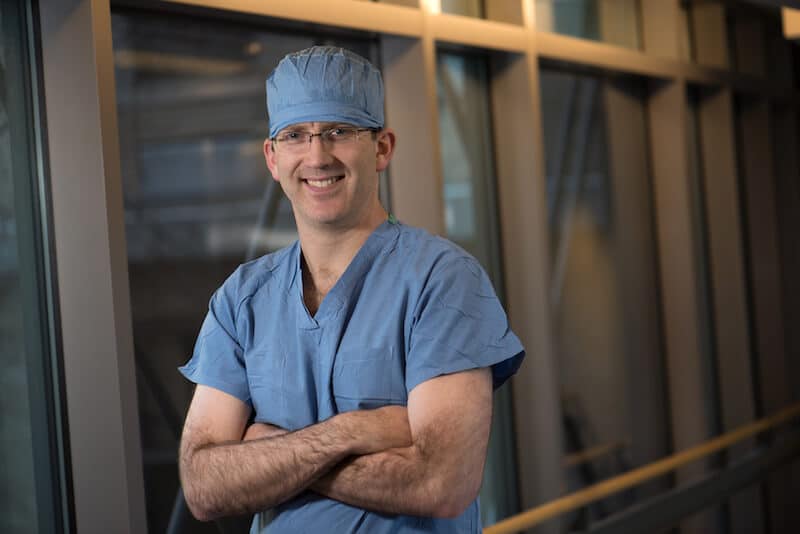Doctors at Boston Children's Hospital performed emergency surgery on the heart of a few-day-old baby born with holes in the heart valves. They were helped by a virtual twin of the baby's heart, as part of the living heart project led by Dassault Systèmes, which they presented during the 3DEXPERIENCE World 2023 conference

A few months ago, a baby girl was born at Children's Hospital in Boston with holes in both of the main valves of the heart. In addition, the right room was very small and the left room was very large and there were three holes in the partitions between the two rooms. Dr. David Hogenson, who operated on the baby when she was a few days old, explains: "In order to restore the heart and give it the physiology of a healthy heart, we had to close the holes in the valves and we enlarged the third hole and used it to allow the insertion of the implants that we printed with a XNUMXD printer.
Dr. Hogenson presented the analysis as part of the 3DEXPERIENCE World 2023 conference held by Dassault Systèmes last week in Nashville, Tennessee.
Dr. Hogenson is a cardiothoracic surgeon and associate professor of surgery at Harvard Medical School affiliated with Children's Hospital in Boston. This is the largest cardiology center in the US. Dr. Hogenson specializes in congenital heart surgery, and his research interests include surgical techniques for complex congenital heart defects.
To plan the surgery, Dr. Hogenson used the Living Heart Project. He combined the images of the heart in a variety of devices (MRI, CT) and created a virtual twin of the baby's specific heart.

"We have been collaborating with Dassault Systèmes for several years, and use some of their simulation and engineering tools to better plan complex operations," Hogenson said. The goal of the "Living Heart" project is to create the virtual twin of the human heart. So far, over 100 bodies from the research fields (including both Harvard University and Tel Aviv University. A.B.) have joined the task. Together with Dassault Systèmes, they helped develop the first XNUMXD simulation of a beating human heart in the middle of the previous decade, using the "SMULIA" software solution, and now, says Dr. Hogenson, the system has matured and enables the planning of complex surgeries.
In response to the science site's question, how to operate on the heart of a baby a few days old, Dr. Hogenson said: In such cases, the implants must be planned taking into account the special conditions of the specific heart. The operation must be performed in the first week after birth otherwise even if the child lives, he will be dependent on a pacemaker for the rest of his life. The implants (created in the laboratory with the help of the virtual twin of the heart) must be the right size and the right shape to almost a millimeter for the surgery to be perfect.
Neonatal heart surgeons face unique challenges. They have to work on a heart whose shape is distorted - that is, different from the XNUMXD model of the beating heart they know. In addition, there is the matter of scale. The XNUMXD model is conveniently painted, with each color representing different areas of functionality and operation. It is also very large on the screen, but when the moment of surgery comes, you have to deal with the rather tiny real heart.
"There is a hole in the shape of a triangle between the mitral valve, painted in purple, and the pulmonary valve, painted in red," says Dr. Hogenson, pointing to the XNUMXD model of the baby's heart. "On the other side is the electrical system of the heart. We have to work very hard not to damage any of these tissues otherwise the child will depend on a pacemaker for the rest of his life."
Like real heart muscle, the patch material is anisotropic, meaning it has different properties in different directions. It works in a similar way to carbon fiber in an epoxy matrix - a composite material that is a material used in airplanes and racing cars, and which the simulation tools of Dassault Systèmes (SIMULIA and ABAQUS) know well.
Using ABAQUS, Dr. Hogenson was able to ensure that the heart patch material, which was cut in the lab, could stretch into a three-dimensional shape and withstand the stresses of blood flow.
"Without the prior preparation of the three-dimensional model of the specific heart of the patient being operated on, we would be groping in the dark. The planning was crude and we had to memorize the plan and make the necessary corrections during the surgery. In this way, the surgery is much more accurate, and the chances of the patient's recovery are high." concluded Dr. Hogenson. This particular baby is healthy and in the video shown at the conference she looks as healthy as any other child her age.
More of the topic in Hayadan:
